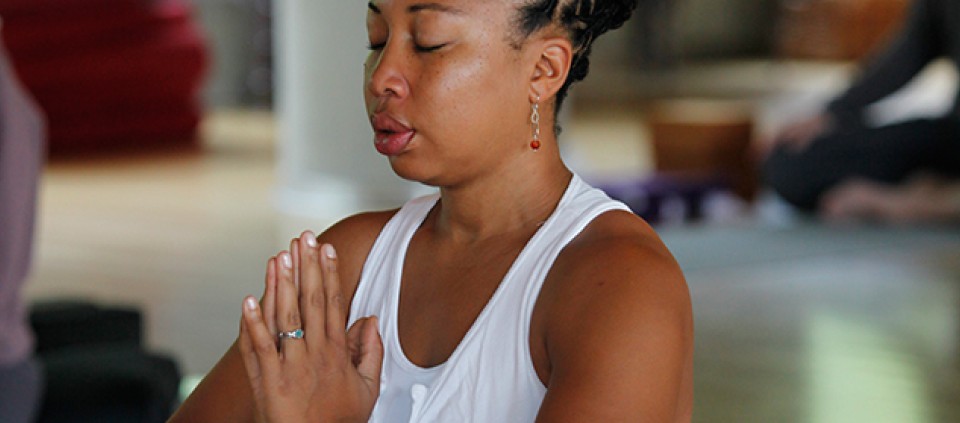Learning to Listen to Your Body

Many of us have heard the phrase “listen to your body” while in a yoga class. We know that this suggestion essentially means that we shouldn’t over-stretch or push past our limits. If we don’t listen to our bodies, we might end up injured or exhausted. You might also have heard about the importance of listening to the body as a way of guiding our choices when it comes to the food we eat.
What if we took this practice of listening to the body into our daily life, and allowed it to inform our activities and interactions? Listening to your body is an art and a skill. It requires unlearning the habit of listening only to the mind—with all its thoughts, strategies, planning, projections, and ruminations—rather than tuning in to sensations, feelings, and emotions.
Another challenge is our tendency to be outwardly focused as we move through life. How do we balance our attention between ourselves and the world around us? Can we use part of our attention to go inward and notice what we’re feeling, even as we go from one task, activity, and interaction to another?
Attuning to your body while living your full life simply requires you to pause and feel throughout the day. That’s all. Stop the momentum for just 10 seconds every hour or so, and ask yourself, “How do I feel in this moment?” Another question I like is, “What sensations or feelings am I most aware of right now?” These two questions are entryways to including our body’s experience as we live our lives.
Once you attune to your body, the next step is meeting your experience with respect and loving-kindness. When it comes to difficult or painful feelings—whether it’s a headache or a heartache—most of us, most of the time, look for ways to escape from the pain we feel in the body. Thich Nhat Hanh suggests offering an invitation to the painful emotions that live in the body: If you are feeling fear, you would say, “Welcome, my dear fear”; if you’re angry, “Welcome, my dear anger.” This helps provide a loving container for the body’s experience.
Once we’ve tuned in to the body, we can learn from it. Moments of pain can be a pivotal opportunity to discover guidance in the discomfort itself. We can ask our fear, “Why are you here?” “What are you frightened of?” We can ask our heavy heart, “Why are you here?” “What are you saddened by?” In this practice, we invite our body to speak its truth. I often do this as part of a contemplative journaling practice when I’m struggling with difficult emotions. It’s profoundly healing to express in words what is held in our bodies.
Once you have deeply listened to your body’s pain, your next question might be, “What do you need?” It’s like asking a dear friend who is in pain what you can do, from a place of true caring. The body can guide you in the direction that brings comfort, healing, and balance.
© Kripalu Center for Yoga & Health. All rights reserved. To request permission to reprint, please e-mail editor@kripalu.org.
Dan Leven, RSMT, MPC, a Kripalu faculty member for more than 35 years, teaches students to become Registered Somatic Movement Therapists through his combined trainings, Shake Your Soul® and SomaSoul®.
Full Bio and Programs